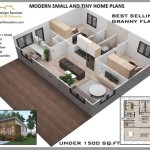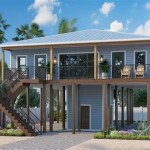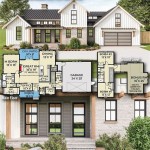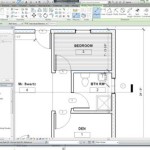Floor Plans for 2-Family Homes: Design, Functionality, and Investment
Designing or selecting floor plans for a 2-family home, also known as a duplex, requires careful consideration of several factors. These factors include functionality for both residences, privacy for each household, adherence to local building codes, and the overall investment potential of the property. A well-designed 2-family home offers both homeowners and renters the opportunity to generate income, build equity, and live comfortably.
The architectural layout significantly impacts the home's value, appeal, and long-term usability. Therefore, choosing the right floor plan is essential for maximizing the benefits of this type of housing arrangement. This article will explore the critical aspects of floor plans for 2-family homes, focusing on layouts, design considerations, and the implications for both residents and investors.
Understanding 2-Family Home Configurations
2-family homes come in various configurations. The most common arrangements include side-by-side (adjoining) units, stacked (upstairs and downstairs) units, and units over a garage or separate structure. Each layout presents unique advantages and challenges regarding privacy, sound insulation, and accessibility. A side-by-side duplex typically shares a central wall, with each unit mirroring the other. This design allows for similar square footage and layout between the two residences. Stacked units often feature one unit on the ground floor and another above, potentially offering different square footage and layouts depending on the structural design. Units over a garage or separate structure offer increased privacy and separation but may require additional considerations regarding structural integrity and soundproofing.
The choice of configuration should align with the property's location, zoning regulations, and the intended use of the home. If the goal is to maximize rental income, a stacked configuration may provide the most efficient use of space. However, if the goal is to offer comparable living arrangements for family members or higher-end renters, a side-by-side configuration might be more suitable. Careful evaluation of these factors during the planning stage is crucial for developing a successful 2-family home.
When considering these configurations, attention must be given to shared utilities. Common utilities like water, electricity, and gas can be either metered separately for each unit or shared, with costs allocated proportionally based on usage or an agreed-upon formula. Separately metered utilities offer transparency and accountability for each tenant, while shared utilities can simplify billing and potentially reduce overall costs. However, shared utilities require clear communication and agreement between the occupants to avoid disputes over usage and payment.
Key Design Considerations for Privacy and Functionality
Privacy and functionality are paramount when designing floor plans for 2-family homes. Regardless of the configuration, each unit should maintain a sense of independence and autonomy. This includes separate entrances, distinct living spaces, and adequate sound insulation between units. Shared spaces, such as laundry facilities or outdoor areas, should be carefully planned to avoid conflicts between occupants. Clear delineation of each unit's boundaries is essential for maintaining harmonious living arrangements.
Separate entrances are non-negotiable for most tenants. A private entrance creates a sense of ownership and prevents unnecessary interactions between the two households. The design should consider the flow of traffic to and from each entrance, ensuring that one tenant's activity does not disrupt the other's. Landscaping and architectural features can be used to visually separate the entrances and enhance privacy. For example, strategically placed shrubs or fences can create a buffer zone between the two units.
Inside the units, floor plans should prioritize the separation of living spaces. Bedrooms should be located away from shared walls, and common areas like living rooms and kitchens should be designed to minimize noise transmission. Sound insulation is critical, especially in side-by-side and stacked configurations. Using soundproof drywall, insulation, and resilient channels can significantly reduce noise transfer between units. Attention should also be given to plumbing fixtures and HVAC systems, which can be potential sources of noise pollution. Proper installation and maintenance of these systems are essential for maintaining a peaceful living environment.
Adequate storage space is another important consideration. Each unit should have sufficient storage areas for personal belongings, seasonal items, and maintenance equipment. This can be achieved through closets, cabinets, and potentially separate storage sheds in the backyard. Providing ample storage reduces clutter and promotes a sense of organization within each unit.
Maximizing Investment Potential Through Floor Plan Optimization
The floor plan of a 2-family home directly impacts its investment potential. A well-designed layout can attract higher-quality tenants, command premium rental rates, and increase the overall resale value of the property. Optimizing the floor plan involves careful consideration of market trends, tenant preferences, and the long-term viability of the investment. Investing in quality materials, modern amenities, and appealing aesthetics can significantly enhance the property's appeal and profitability.
Market research is essential before finalizing the floor plan. Understanding the demographics of the target renter market will help determine the ideal size, layout, and features of each unit. For example, if the target market consists of young professionals, a modern, open-concept layout with updated appliances and amenities might be most appealing. If the target market includes families, a larger unit with multiple bedrooms and a spacious backyard might be more suitable. Tailoring the floor plan to meet the specific needs and preferences of the target market will increase the property's appeal and occupancy rate.
Features such as in-unit laundry, updated kitchens and bathrooms, and private outdoor spaces can significantly increase the property's rental value. In-unit laundry is a highly desirable amenity for most renters, as it eliminates the need to share laundry facilities and provides added convenience. Updated kitchens and bathrooms are also strong selling points, as they enhance the overall appeal and functionality of the units. Private outdoor spaces, such as balconies, patios, or fenced-in yards, offer tenants a place to relax and enjoy the outdoors, which can be particularly appealing in urban areas.
The long-term maintenance of the property should also be considered when optimizing the floor plan. Durable materials, energy-efficient appliances, and low-maintenance landscaping can reduce ongoing costs and increase the property's profitability. Choosing materials that are easy to clean and resistant to wear and tear will minimize maintenance requirements and prolong the lifespan of the units. Energy-efficient appliances can lower utility bills, which can be a significant selling point for renters. Low-maintenance landscaping can reduce the need for frequent yard work and save time and money on landscaping services.
Furthermore, accessibility should be incorporated into the design, especially if the property is intended for long-term ownership or rental. Designing at least one unit with accessible features, such as wider doorways, ramps, and grab bars, can make the property more appealing to a wider range of tenants and increase its long-term value. Even if accessibility is not immediately required, incorporating these features during the initial construction phase can simplify future modifications and ensure that the property remains adaptable to changing needs.
Finally, compliance with local building codes and regulations is essential. Before finalizing the floor plan, it is crucial to consult with local building officials and obtain all necessary permits and approvals. Failure to comply with building codes can result in costly delays, fines, and even legal action. Ensure that the floor plan meets all requirements for fire safety, structural integrity, and accessibility. This may involve incorporating features such as fire-rated walls, sprinkler systems, and emergency exits. Compliance with building codes not only protects the safety of the occupants but also ensures the long-term viability of the investment.
In summary, careful planning and attention to detail are essential when designing floor plans for 2-family homes. By considering the configuration, prioritizing privacy and functionality, and optimizing for investment potential, it is possible to create a property that is both comfortable for residents and profitable for investors. Thorough research, consultation with professionals, and compliance with local regulations are crucial for ensuring the success of the project.

House Plan 5302 Park Place Multi Family

House Plan 5182 Primrose Place Multi Family

Plan 45370 Colonial Style Duplex Home Design Two Story 3 Be

Duplex House Plans Modern 2 Family Home 269 8 M2 2778 Sq Feet Townhouse

Top 10 Duplex Plans That Look Like Single Family Homes Houseplans Blog Com

Plan 86076bs Modern Multi Family House With 2 Units 3 Beds Baths 1210 Sq Ft Each

Modern Two Family House Plan With Matching 3 Bed Units

Multi Family Plan 4285

Plan 21603dr 6 Unit Modern Multi Family Home With 900 Sq Ft Units

House Plan 408 Brookshire Multi Family
Related Posts








